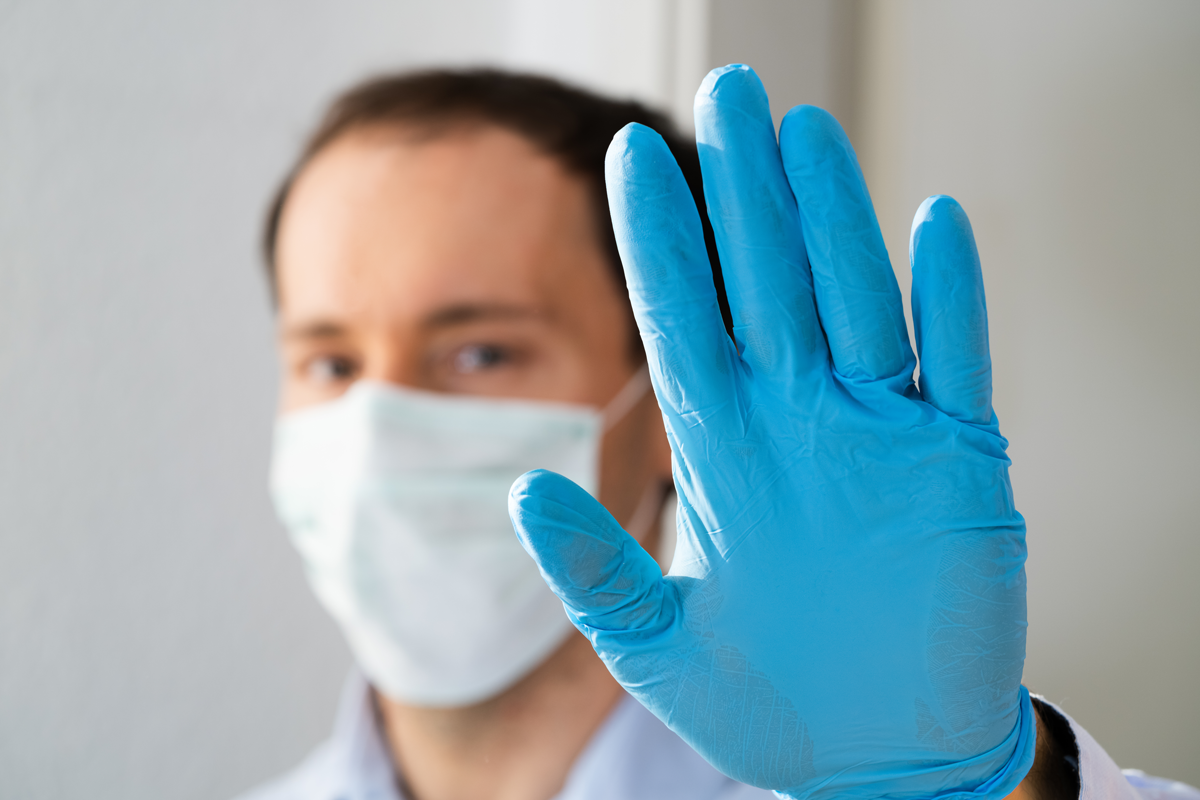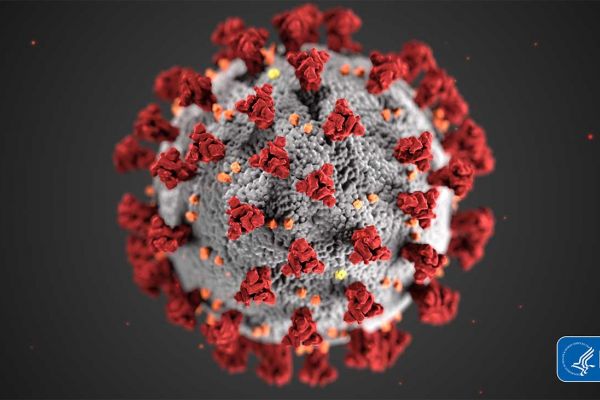Why this piece of personal protective equipment won’t protect you from the virus — and may increase your risk
It’s almost a new fashion trend — wearing medical gloves to the grocery store, doctor’s appointments and other outings as part of our new touch-less reality to protect against COVID-19. But this is one practice that medical experts are urging us to stop.
Why? While medical gloves are part of the necessary personal protective equipment (PPE) for physicians, nurses and other healthcare workers while on the job, wearing them in the community for daily life actually increases your risk for contracting the virus, explains Jillianna Wasiura, Infection Control Coordinator at Roswell Park. “The virus and other germs get on the gloves just as easily as they would your hands. Then what?”
Healthcare workers change their gloves after each interaction with a patient, after handling equipment and before moving on to another task or patient. They also follow a technique for removing the gloves so that the contaminated outside of the gloves won’t touch their skin or wrists. In between each new pair of gloves, they wash and sanitize their hands.
Gloves Help Spread the Virus
Imagine that the virus is red paint and each time you touch something with gloved hands, more paint gets on the gloves. You scratch your face or eyes, drive your car, open a store door, push a cart, select groceries, brush hair from your eyes, select more groceries, talk to a neighbor, sneeze into a tissue, pay for groceries. Then you get a text or phone call and you respond to it. That red paint will be everywhere, and you helped spread it from the door to the cart to your face, phone and everything.
“This is what we call cross-contamination,” explains Wasiura. “Even if you could change gloves between each of those tasks, if you’re not washing your hands and using sanitizer before and after each new pair, you’re not protecting yourself. It is important to break the chain of infection from each touch point that could be contaminated, and this is done by performing hand hygiene between each of those moments.”
False Sense of Security
Another problem with wearing gloves is that they cover just your hands. But the virus doesn’t get into your body through the skin on your hands. The point of entry for the virus is through the eyes, nose or mouth.
The virus is passed along mainly through respiratory droplets from an infected person who isn’t masked and who is coughing, sneezing or just talking, and those droplets land on you when you are within six feet of that person. Because the virus can linger on surfaces, you can also become infected by touching a surface that’s contaminated with COVID-19 (whether or not you’re wearing gloves) and then touching a point of entry — your nose, mouth or eyes. To break the chain of infection and spread, you need to stay at least six feet away from others and wash or sanitize your hands frequently, especially after touching surfaces in the community and before touching your face.
“The gloves may help you feel protected, but that’s a false sense of security,” says Wasiura. “If you’re wearing gloves, then you’re probably not washing your hands and sanitizing as often. If you come to the hospital for an appointment with gloves on, you’ve just brought in the germs from everything you touched on your way. We would rather patients and visitors use the sanitizer as they enter and throughout their visit, as necessary.”
Other means of protection include: staying home as much as you can; remaining six feet apart from others; not touching your face, nose or mouth; disinfecting surfaces regularly and…washing and sanitizing your hands frequently!
More Information
The COVID-19 situation is evolving rapidly. To read the latest information on Roswell Park’s response and find additional resources, visit our Coronavirus (COVID-19) web page.
Learn MoreBetter Hand Hygiene
You’ve heard this before, but it bears repeating: An effective way to protect yourself from COVID-19 and other germs is frequent handwashing with soap and water and sanitizing with a 60% alcohol-based sanitizer. You know the drill:
- Wet your hands with clean, running water and turn off the tap.
- Apply soap.
- Lather up by rubbing your hands together, getting the suds onto the backs, between each finger and under fingernails.
- Scrub for at least 20 seconds.
- Rinse your hands well with clean, running water.
- Turn off tap with your elbow or a paper towel.
- Dry hands with a clean towel or air dryer.
You should wash your hands each time you’ve been in a public place; after coughing, sneezing, blowing your nose and using the bathroom; before eating; and any time they are dirty. This practice is a good habit to keep long after COVID-19 fades away.

